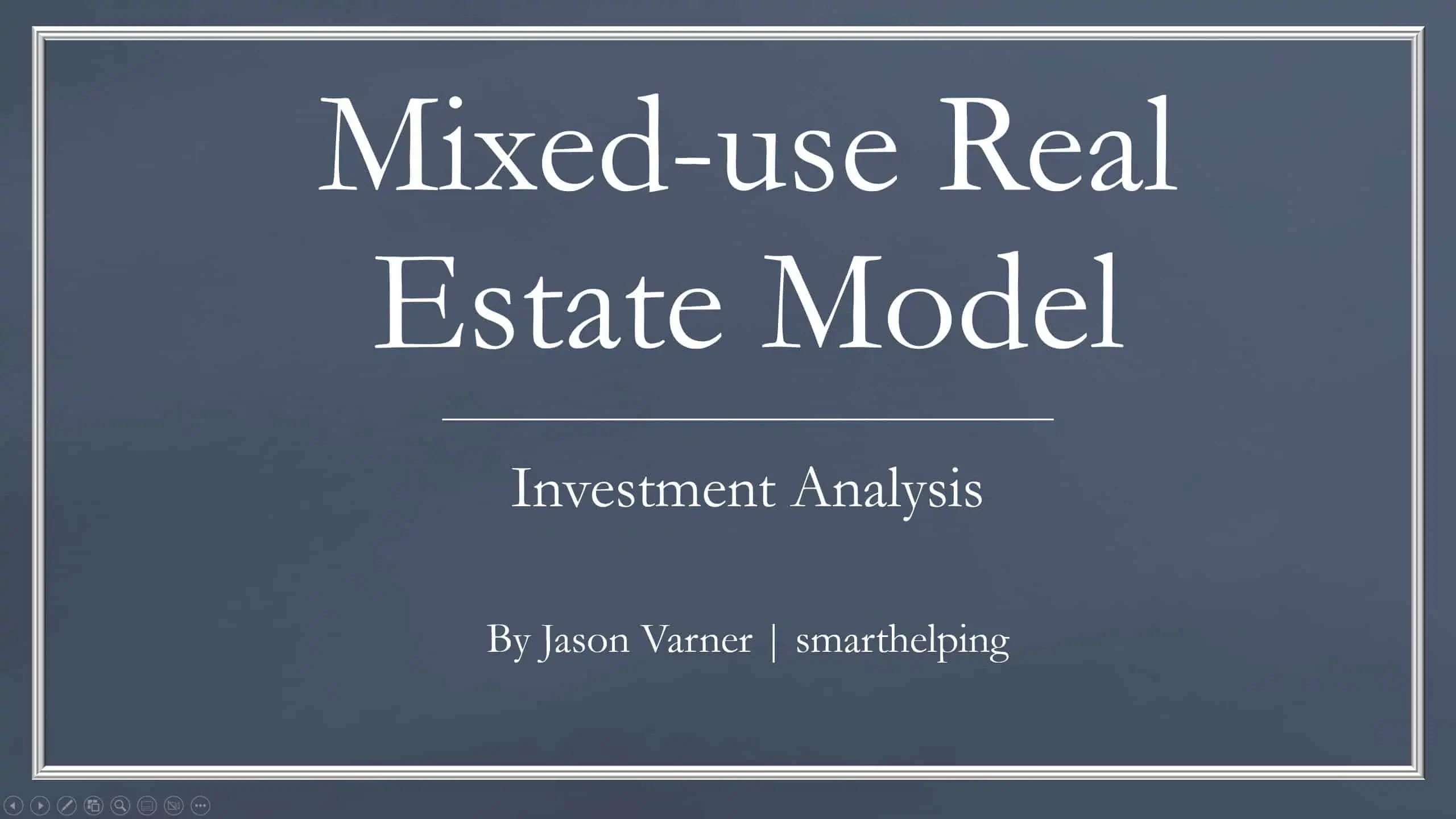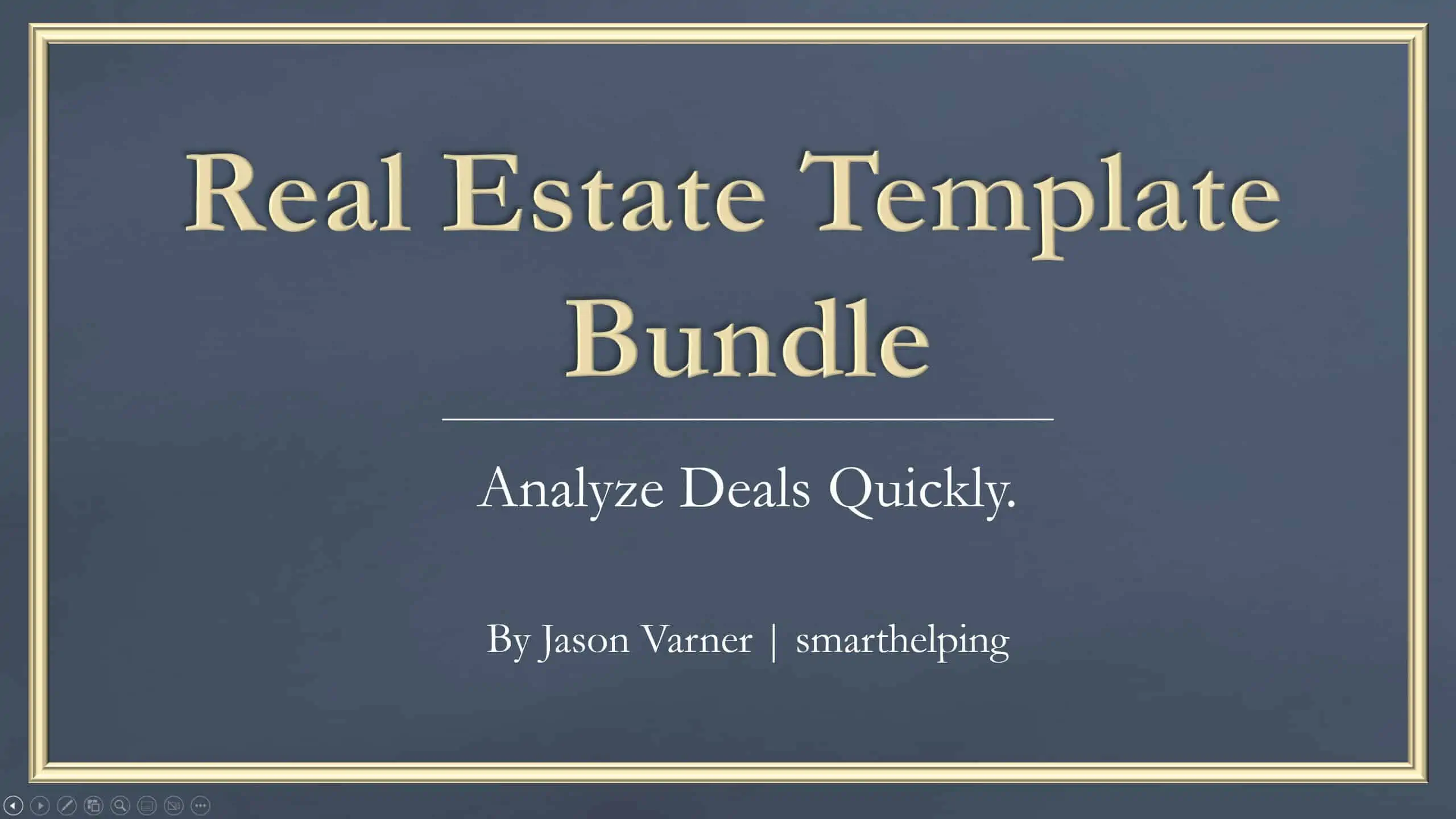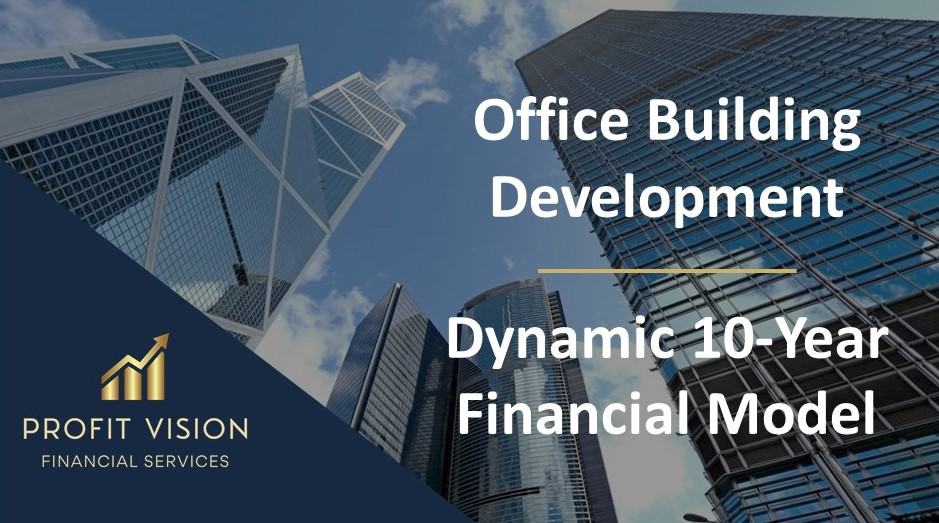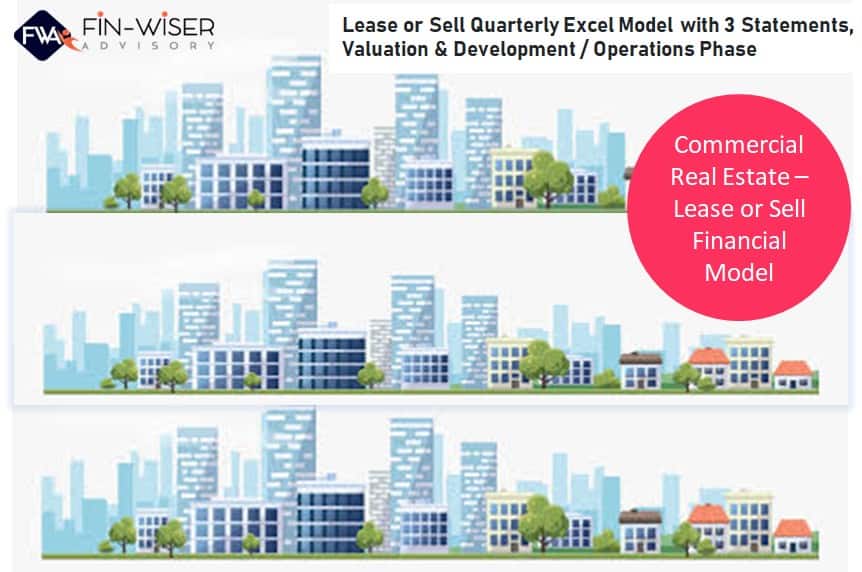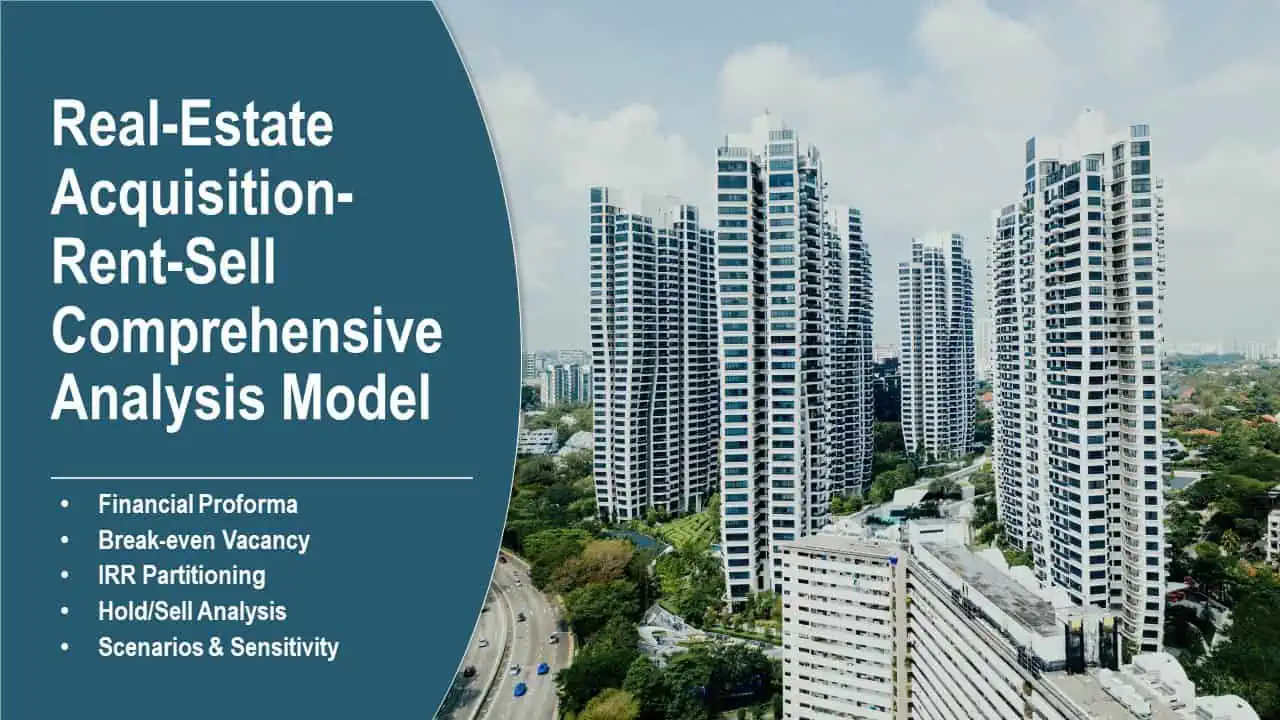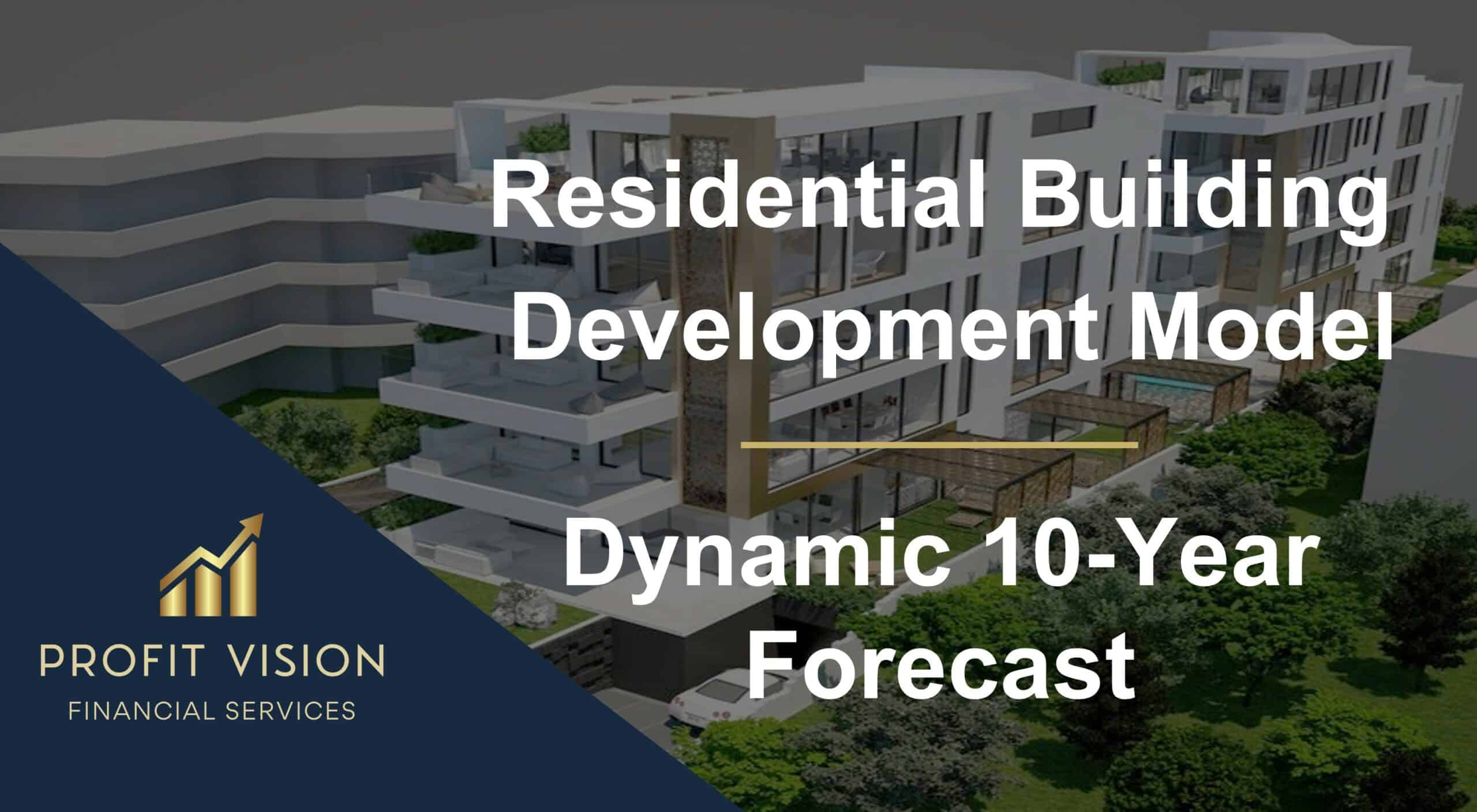Real Estate Acquisition: Unit-Based
Plan out the initial investment requirements, expected operating cash flow, and potential exit proceeds of a given property that has up to 10 units.

Video Overview:
This real estate model is a great tool for the following purposes:
– Purchasing a property with up to 10 units and economics driven off inputs for each unit
– Total hold time of up to 10 years (dynamically choose the exit month)
– Dynamic construction period (define start/end month and total cost, the model evenly distributes this expense per month)
– Financing via traditional loan and/or advanced financing through a joint venture
– Rent driven by annual rent per square foot (Rent PSF)
– Opportunity to increase rent one time per unit and then have a stabilized long-term rent growth rate
– Operating assumptions driven on a per unit basis except for property taxes
– Cash flow analysis per startup/closing costs, operating income, exit proceeds
– Can be a joint venture or single operator (for joint venture there is a connected cash flow waterfall with 3 IRR Hurdles so you can do a soft/hard pref. and strategic distribution
The template lets nearly all the inputs be driven based on the month of occurrence to make it user friendly and intuitive. All the primary assumptions are on the monthly model tab for easier visibility when adjusting inputs. Final output reports included monthly and annual operating income, cash flow, IRR, equity requirements, DCF Analysis, and visuals for key financial metrics.
The model will show the expected exit value based on an exit cap rate for each year.
A ‘cash flow detail’ works as a cash flow statement summary so the user can easily see all items effects the final cash flow value in each period.
Similar Products
Other customers were also interested in...
Mixed-Use Real Estate Model: Leverage / JV Options
A general real estate model to plan all assumptions for up to 7 'uses' for a given property. Include... Read more
Apartment Building / Self-Storage / Multi-Family A...
This real estate model works great for acquisitions of apartment buildings, multi-family properties,... Read more
Real Estate Financial Model Bundle
This is a collection of financial model templates that provides the financial projections and valuat... Read more
Office Building Development Financial Model (Const...
Financial model presenting a development scenario for an Office Building including construction, ope... Read more
Commercial Real Estate – Lease or Sell Quart...
Commercial Real Estate - Lease or Sell Quarterly Excel Model with 3 Statements, Valuation, and Devel... Read more
Real Estate Acquisition-Rent-Sell Comprehensive An...
An integrated, dynamic and ready-to-use Real Estate Acquisition-Rent-Sell Comprehensive Analysis Mod... Read more
Residential Building Development Model (Sale, Rent...
Financial model presenting a development scenario for a Residential Building with units available fo... Read more
Hotel/Guesthouse/Resort Development Model and Valu...
This Hotel / Holiday Resort Development Model will take you through a 20-year period of Three Statem... Read more
Industrial Building Development Financial Model (C...
Financial model presenting a development scenario for an Industrial Building including construction,... Read more
Warehouse Development Financial Model
This is a detailed, well-structured and transparent cash flow model for the development of... Read more
You must log in to submit a review.




